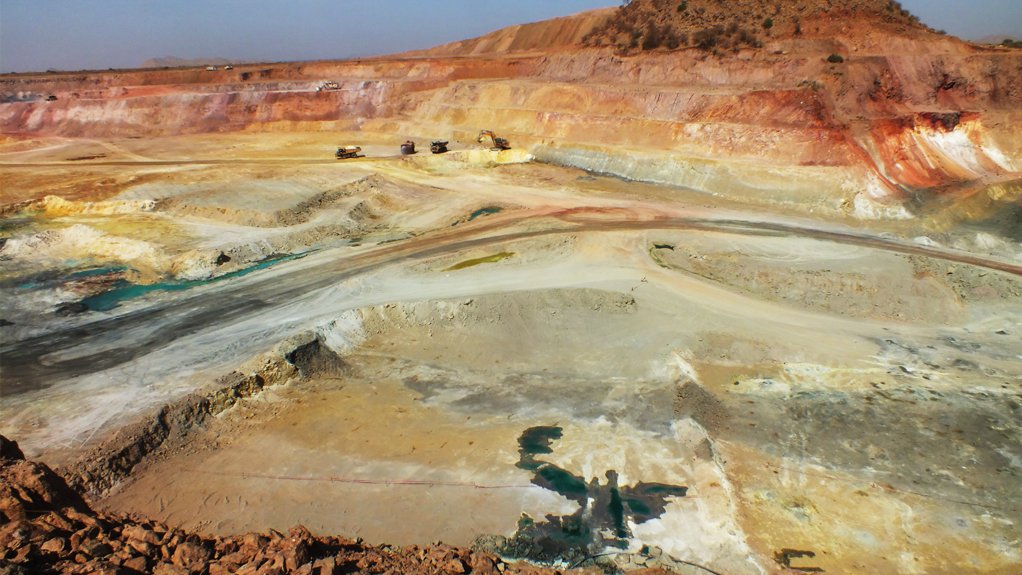VANCOUVER (miningweekly.com) – Canadian base metals producer Nevsun Resources has found more mineralisation at its flagship Bisha mine and satellite deposits in Eritrea, in the Horn of Africa.
Drilling undertaken in 2016 has increased the inferred resource at the Harena deposit by nearly 130% to 25-million tonnes grading 0.93% copper, 4.76% zinc, 0.8 g/t gold and 31 g/t silver. Harena, a satellite deposit to the Bisha mine, remains open with further drilling taking place this year.
Nevsun also reported a maiden inferred resource for the Asheli deposit totalling 2.4-million tonnes grading 1.86% copper, 8.59% zinc, 0.4 g/t gold, and 30 g/t silver. The company said it is currently evaluating more targets immediately along strike of Asheli.
"Our 2016 regional exploration programme built on 2015 successes, adding over 1.1-billion copper equivalent pounds of inferred resources. Harena, in particular, continues to increase in size and has growing underground mining potential to extend the mine life at Bisha. Our exploration drilling was also successful in defining a new massive sulphide resource at Asheli, further highlighting the prospectivity of the Bisha district to host additional resources." Nevsun CEO Cliff Davis stated.
As at December 31, the ongoing exploration campaign has more than doubled the Bisha district-wide inferred resources to 31-million tonnes containing 667-million pounds of copper, 3.3-billion pounds of zinc, 780 000 oz of gold, and 30-million ounces of silver.
The measured and indicated resources stood at 38-million tonnes, containing 869-million pounds of copper, 3.5-billion pounds of zinc, 710 000 oz of gold and 41-million ounces of silver.
Nevsun expects to update the Bisha mineral reserve estimate by late May or early June.
For the Timok project, in Serbia, resources are the same as disclosed in the 2016 preliminary economic assessment and will be updated when the Upper Zone project prefeasibility study is published in September, Nevsun said. The board will redeploy about $120-million of funding from its corporate dividend toward developing the Timok project over a four-year period. The company stated last month that it had determined that the development of the Timok Upper Zone represents by far the company’s best allocation of capital.
2016 RESULTS
For 2016, Nevsun reported that Bisha had a strong close out of the supergene phase, including the sale of about 90 000 oz of gold equivalent ounces from stockpiled material, which led to a strong first half of the year.
The second half of the year saw Bisha make "less than satisfactory" progress on producing a saleable copper concentrate in the copper circuit; however, the operation improved the performance over time. Meanwhile, the current zinc price and treatment charge environment have enabled Bisha to continue to generate positive cash flow from operations.
As a result, net income attributable to shareholders for the 12 months to December 31 halved to $11.35-million, or $0.04 a share. Revenue dipped 35% to $230.7-million, as the company produced less copper and more zinc as it transitions from processing supergene ore to primary ore. The pre-commercial production phase of the zinc expansion plant further impacted output for four months during the year.
Edited by: Chanel de Bruyn
Creamer Media Senior Deputy Editor Online
EMAIL THIS ARTICLE SAVE THIS ARTICLE
ARTICLE ENQUIRY
To subscribe email subscriptions@creamermedia.co.za or click here
To advertise email advertising@creamermedia.co.za or click here













